Skinny to Muscular
Skinny to Muscular Transformation: The Complete Guide
Published
2 months agoon
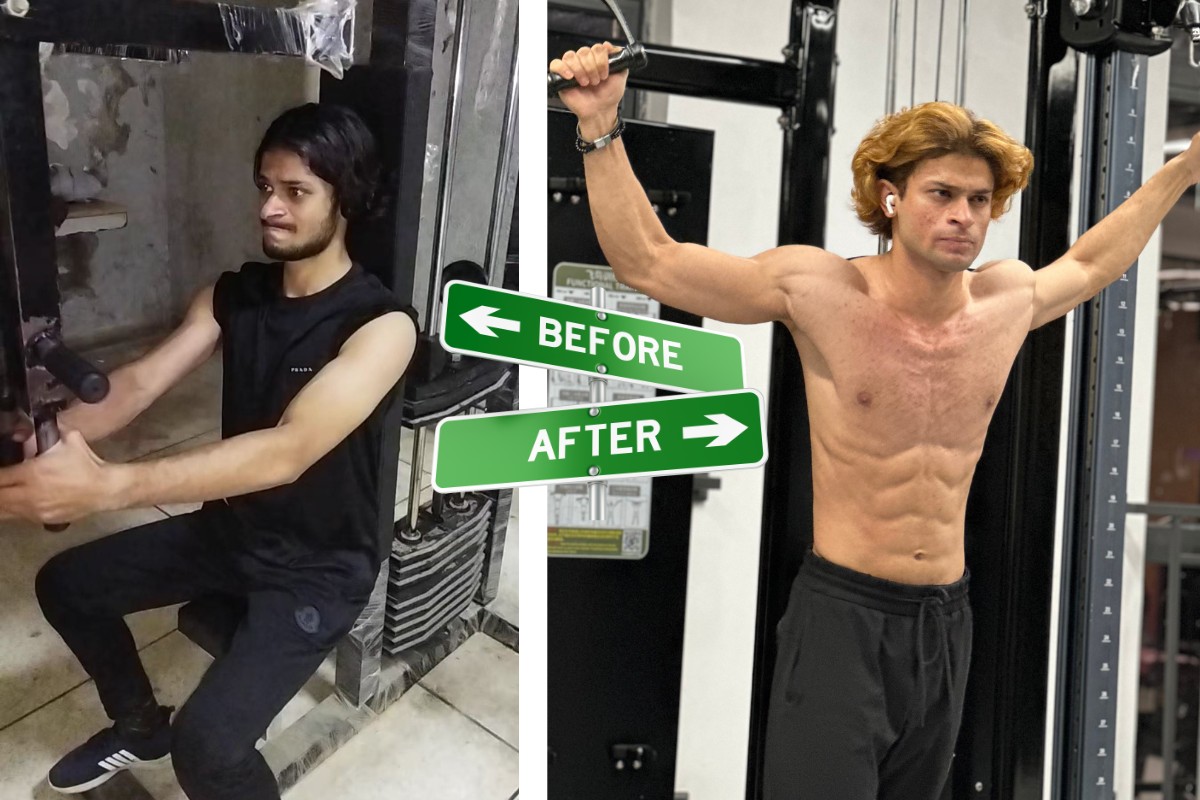
Being skinny isn’t shameful; wanting to change is fantastic. This guide shows how to go from skinny to muscular transformation step by step. We see fit influencers and think it’s out of reach, no money for a gym, no supplements, home food isn’t “perfect.” The truth? Most of us are missing knowledge and consistency. Give yourself time. Learn about your body, calories, protein, and nutrients. Know beginner-friendly routines, manage low appetite and fast metabolism, and follow a simple plan.
I’m Ahmad Hassan. I went from 51 kg to 65 kg in about two years now leaner, with visible abs, defined arms and other muscles . I started doubtful, with no guidance and limited resources, and made plenty of mistakes (I explain the timeline on my About page). In this guide, I’ll break everything down step by step science-backed and experience-backed so you can start your own skinny-to-muscular transformation.
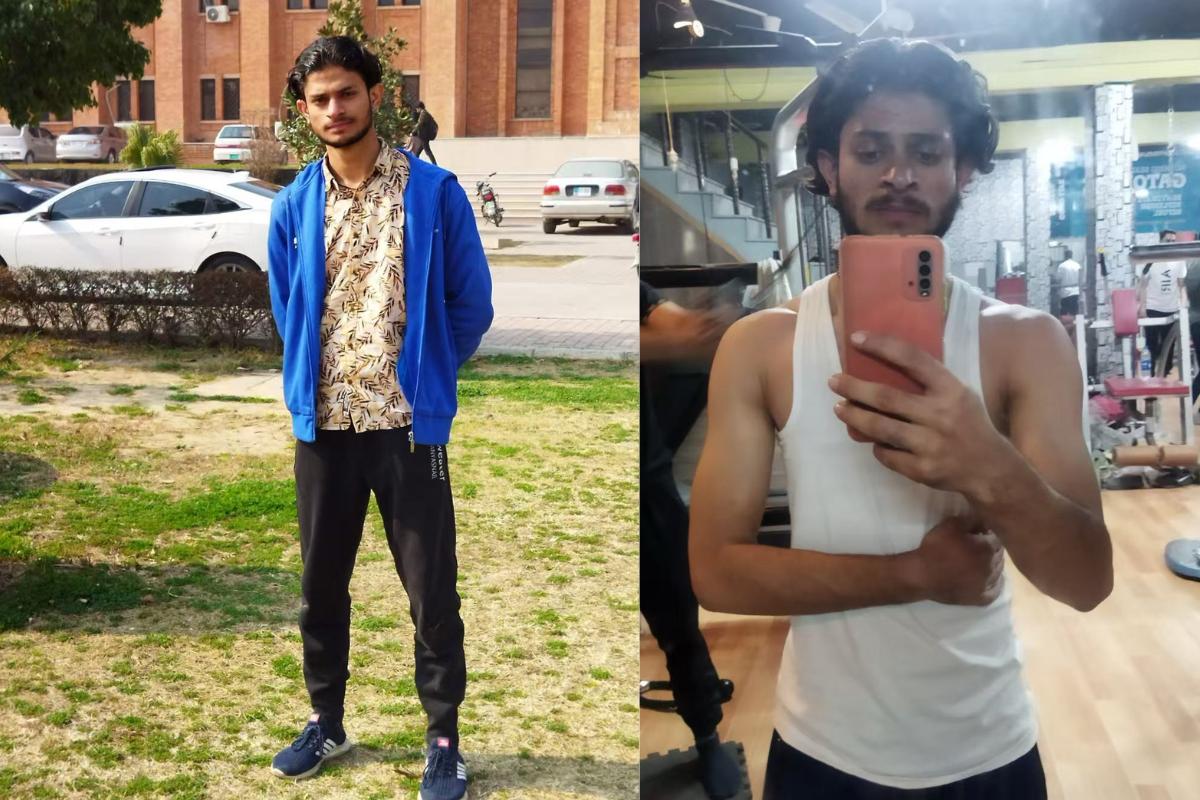
Table of Contents
ToggleMy Skinny to Muscular Journey
Starting Point in Pakistan:
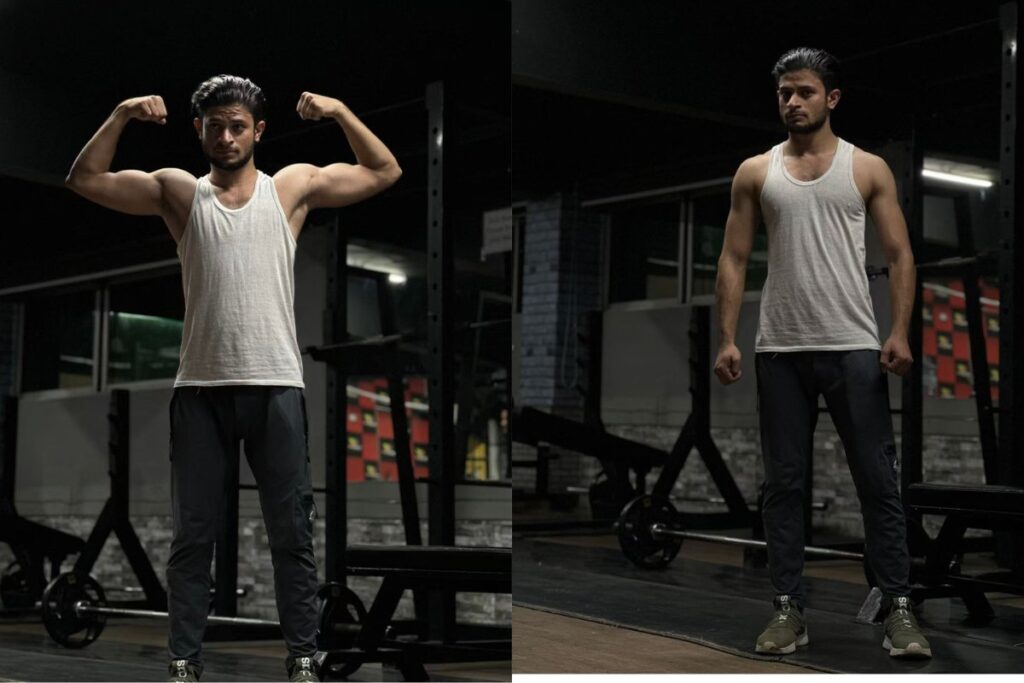
I started with nothing more than a raw mindset: I didn’t want to be the skinny “stick-boy” anymore. Motivation and a goal kept me going, but I soon learned that wasn’t enough. I was hitting the gym every day lifting weights, doing push-ups, copying exercises from YouTube. My body felt stronger, but I was often sore, even dealing with headaches. Something was missing: proper food.
Thanks to my brother, who had some experience, I began learning about nutrition. We studied together at university, freelanced to cover expenses, and trained side by side. That’s when things changed we followed a push-pull-legs routine and tracked calories with MyFitnessPal. I started eating in a slight surplus, around 200–300 calories above maintenance, and after a few months, I gained 6–7 kg.
We added whey protein and creatine choosing trusted brands after careful research. Health mattered more than shortcuts. Within months, my weight went from 51 kg to about 62 kg. My shape improved, though my abs were still missing. Then life brought a twist… and that’s where my journey in China began.
Restarting in China:

When I was about to finish my degree, we planned to pursue a master’s in China. Between all the paperwork and moving, I stopped working out for a few months. After settling in, I started training again but this time, I was more serious than ever. I avoided oily foods, focused on protein and nutrient-rich meals, and managed my time between studies, freelance work, and cooking for myself.
In the beginning, it was tough. Sometimes I relied on 2–3 scoops of whey protein just to hit my calories, but I still pushed through. Luckily, I had muscle memory from before, starting at around 62 kg.This time, the results came faster. I already understood my body’s needs: what workouts worked best, how many calories I needed, and how to stay consistent.
After six months, I reached 65 kg with visible abs, a defined chest, arms, and back, sitting at around 8% body fat. Why was this transformation quicker? Because knowledge made all the difference. My first year was trial and error; in China, I trained smarter. I worked out six days a week, and almost every session included 2–3 focused ab exercises.
I also learned valuable lessons that will shape my next goals in fitness and I’ll share those in the next section.
Lessons Learned from My Transformation:-
What I learned from my journey is below in bullet points,
- Knowledge first: the right information speeds up results.
- Mindset & small milestones: focus on achievable steps, not the end goal.
- Consistency over intensity: 30–60 mins daily is better than random long sessions.
- Progressive overload: slowly increase weight or reps to keep improving.
- Sleep matters: aim for 6–8 hours based on your body’s needs.
- Nutrition is key: eat in a calorie surplus with nutrient-rich foods; food + sleep = 70% of transformation.
- Rest & balance: take 1–2 rest days, enjoy life, and allow the occasional cheat meal without overdoing it.
Why Do Skinny Guys Struggle to Gain Muscle?

High metabolism explained
A lot of skinny guys (including me in the beginning) believe that a “fast metabolism” is the main reason they can’t gain weight. But that’s not entirely true. Metabolism isn’t just fast or slow, it’s influenced by age, height, weight, lean muscle mass, daily activity, and even exercise habits.
People with lean muscle mass and active lifestyles naturally burn more calories, even at rest. For example, a pound of muscle burns roughly 6 calories per day, while a pound of fat only burns about 2. Research also shows that total energy expenditure can vary widely among individuals, which is why some naturally stay thin despite eating a lot [PMC].
So, it’s not just about blaming a “fast metabolism” , it’s about understanding energy balance, tracking calories, and building muscle through consistent training and nutrition.
Not eating enough protein/calories:-
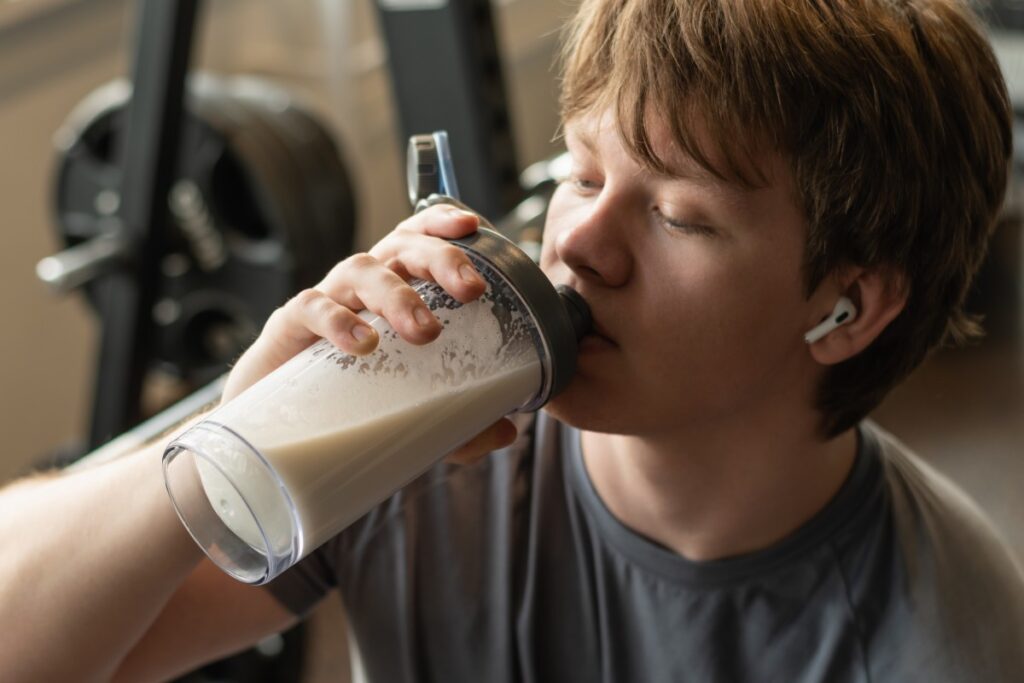
If you train but don’t eat enough protein and calories, your body can’t repair itself. The result is stalled progress, weakness, poor recovery, and even muscle loss. Over time, this lack of nutrients makes it nearly impossible to build new muscle because your body doesn’t have the building blocks it needs.
Protein is at the core of muscle growth. Every workout breaks muscle fibers down; protein (along with nutrient-rich foods and enough calories) provides the raw material to rebuild them stronger. Getting enough protein not only speeds up recovery but also drives consistent growth and overall health during a transformation (PubMed study on protein intake)
Wrong workout structure:-
I’ll mention 5 disadvantages of wrong workout structure while transforming from skinny to muscular.
- Muscle growth slows when key muscle groups are neglected or undertrained.
- Poor exercise selection or imbalance raises the risk of injury.
- Insufficient recovery leads to fatigue, low motivation, and potential muscle loss.
- Repetitive or ineffective exercises waste time and limit strength gains.
- A lack of structured programming makes progress tracking and consistent growth difficult.
Inconsistency & lack of progressive overload:-

In case you are not training regularly or never leave the comfort zone, you can slow down muscle growth in a short period of time,below is guide to keep making progress,,
Do this:-
- Follow a consistent schedule for exercise
- Gradually increase weight, reps, or intensity (progressive overload).
- You can monitor your exercises to track your progress
Avoid this:
- Missing sessions or continuously varying schedules
- Weeks without challenge using the same weights.
- Relying on random workout, No planned or structured workout routine.
The Science of Muscle Growth (Hypertrophy)
What is hypertrophy?
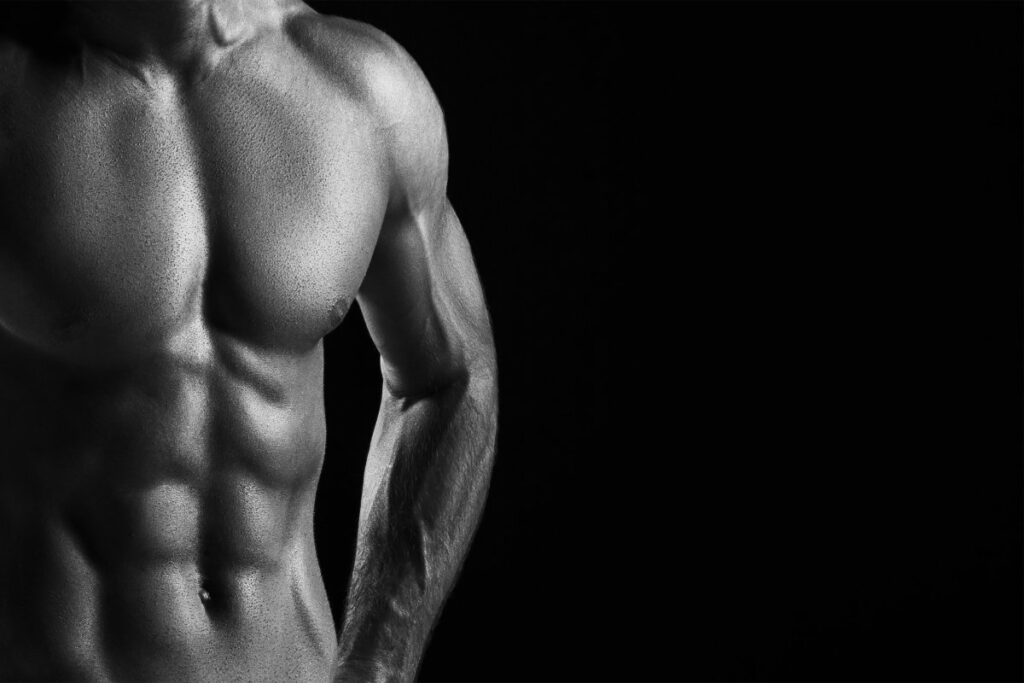
Hypertrophy is a scientific term for muscle growth, specifically, it’s an increase in the size of muscle fibers. It is like we challenge our muscles (with weight training), then they repair themselves to be slightly bigger and stronger to handle the same challenge next time.
To be clearer, when we work out, we create tiny tears in our muscle fibers. While we are resting and eating the proper food with the required nutrients, our body repairs those tears and adds a little extra material, making the muscle larger in size, which is what hypertrophy is.
Types of Hypertrophy?
1- Sarcoplasmic Hypertrophy:
- Works for: It basically works for muscle size and pump
- The Objective: Fill up the fluid and energy reserves (sarcophyll) within the muscle cell – as filling up a balloon with water. The muscle appears to increase in volume but it does not experience much density or strength
2- Myofibrillar Hypertrophy
- Works for: It works for muscle density and strength
- The Objective: Thicken the contractile proteins (myofibrils) within the muscle fibers – as like the addition of more strands in a rope. This causes the muscle to become denser, harder and stronger.
How Hypertrophy Happens?
Hypertrophy does not automatically occur due to lifting weights one time. It needs the appropriate balance of training stimulus, nutrition and recovery. Research shows that progressive overload, mechanical tension, and protein synthesis during recovery are the major factors driving muscle growth (Schoenfeld, 2010)
What is Progressive Overload? Why is it important?
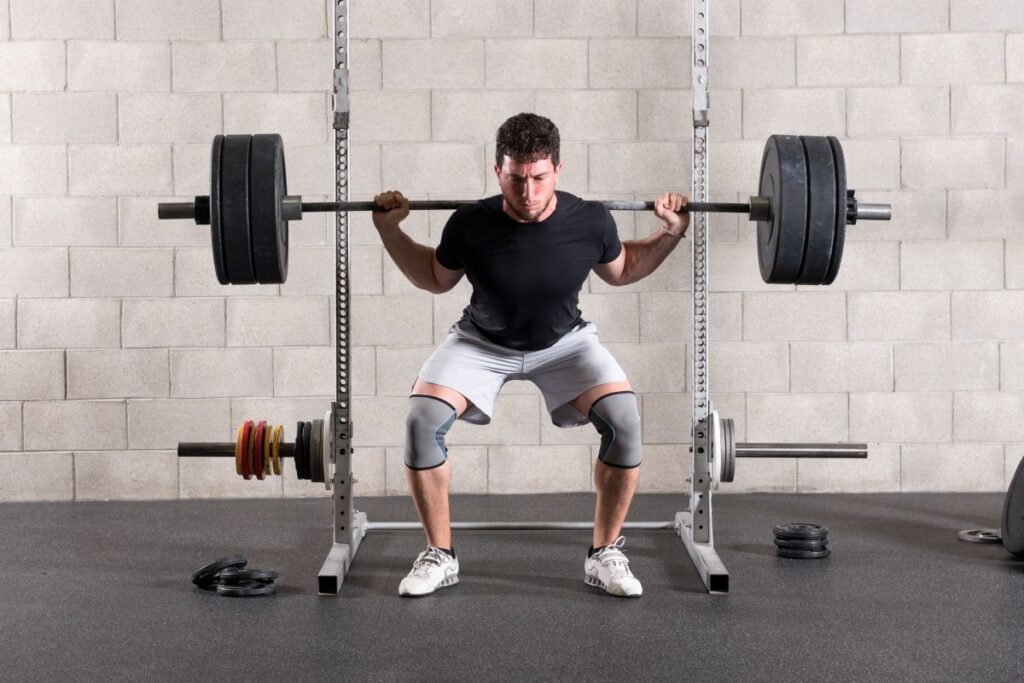
Progressive overload is the fundamental to muscle growth to increase the load on your muscles over time rather than just training with the same weight and reps all the time, it simply means to get bigger and stronger.Mean if you’ll not increase the reps count and weight over-time then your muscles have no reason to grow and get stronger.
Our body is highly efficient and flexible, and will only build and maintain the amount of muscle it needs to handle the stresses you place on it. Lifting the same weight over time signals to our body that no further adaptation is needed , progressive overload breaks this cycle by providing a new stronger stimulus that forces your body to adapt by building more muscle tissue. Study on PubMed shows that consistently increasing training volume through more sets, reps, or load produces greater hypertrophy across multiple muscle groups.
A Simple Skinny-Guy Example:
- Week 1: Bench press 40 kg for 3 sets of 8 reps.
- Week 2: Aim to do a little more. You can either:
- Add 2.5 kg plates on each side of the bar, or
- Keep the weight the same but push for 10–12 reps.
- Add 2.5 kg plates on each side of the bar, or
Training Stimulus (Compound vs Isolation)
The exercises do not all help build muscle the same way. Skinny beginners should focus on the use of compound lifts, exercises that involve training more than one muscle group at a time, instead of depending on isolation exercises.
The largest training stimulus is the compound exercises (squats, deadlifts, bench press, overhead press, and pull-ups). They recruit a larger number of muscle fibers, impose a larger amount of total stress on the body, and cause a more intense anabolic (muscle-building) response. It implies that you get to grow faster. Study on PubMed demonstrates that there is a higher total hypertrophy rate in quit training than compound lifts
Isolation exercises (such as bicep curls, tricep pushdown, or lateral raise) are focused on a single muscle. They can be used to correct weak points and give definition, though they are to be used after your compound lifts.
Skinny-Guy Rule of Thumb:
- 70-80% of your exercise means compound lifts.
- 20-30% arm, shoulder or weak point isolation work.
Nutrition & Protein Synthesis
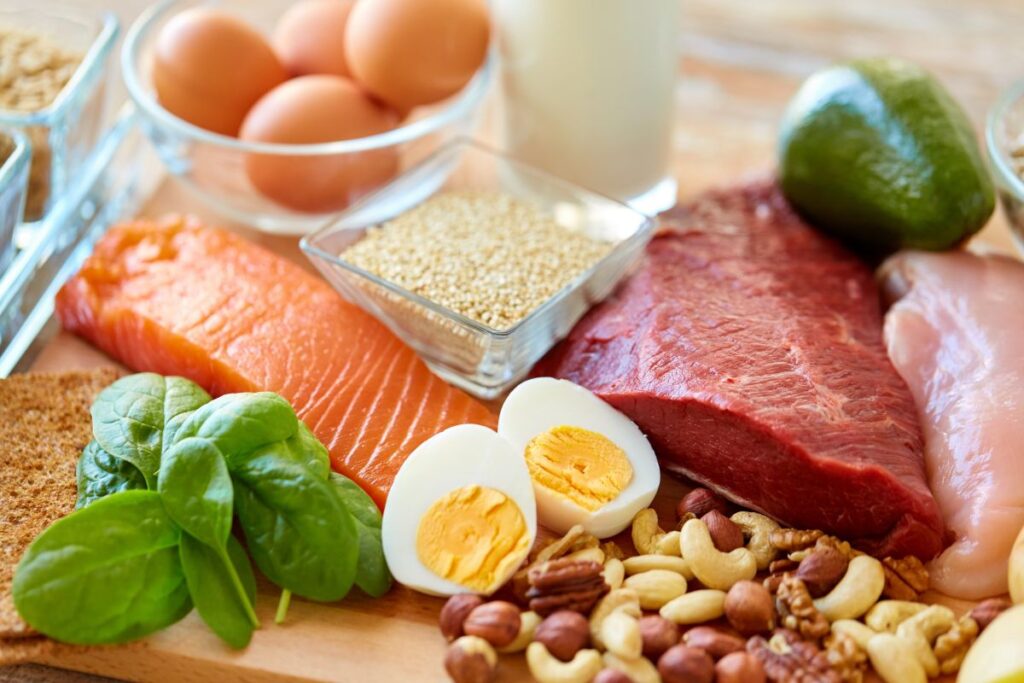
Training creates the stimulus for muscle growth, but nutrition is what makes it happen. Each time you lift, you create small holes in your muscle fibres. Those fibers are repaired by your body when they are fused and new proteins are added to them- this process is known as muscle protein synthesis (MPS). In the absence of sufficient food, this repair process is slowed down or even stopped.
For skinny guys, this means two must-to-do:
- Eat in a calorie surplus : Your body needs extra energy to build new tissue.
- Get enough protein: Aim for 1.6-2g of protein depending on your bodyweight, This range has been shown to maximize muscle growth when combined with resistance training you can refer to this study on PubMed
The calories and protein are a combination that will provide not only the energy but also the building blocks your body needs in order to heal and become stronger.
Skinny-Guy Tip: A skinny guy at 60 kg needs 95-120 g of protein intake each day – spread across the day in meals with chicken, eggs, beef, fish, dairy, or supplements such as whey protein.
Rest & Recovery: Why is it important?
Muscles don’t grow in the gym; they grow during rest. Workouts stress your muscles, and recovery is when the body repairs and strengthens them. Without proper rest, you risk required progress, fatigue, and even injury.
Two key factors matter most:
- Sleep → Aim for 7–8 hours per night. Research shows why enough sleep is critical for muscle recovery, hormonal balance, and protein synthesis
- Rest days → Training 5–6 times per week is fine, but build in at least 1–2 rest days. Recovery allows your muscles and nervous system to reset so you can train harder next time.
Sleep is also a very important part of a fitness journey from skinny to muscular. Our body needs downtime to rest, recover, and develop new muscles.
Best Workouts for Skinny to Muscular Transformation

When I first started, I experimented with random workouts but what really worked for me was the Push–Pull–Legs (PPL) split. I’ve been following it consistently for the past two years, and I definitely added some new exercises, going for variations. It has helped me go from skinny to muscular journey in a structured way.
Push–Pull–Legs Split (My Own Routine)
The Push–Pull–Legs split breaks your training into three sessions:
- Push Day (Chest, Triceps, Shoulders)
- Bench Press – 4(sets) x 8(reps)
- Overhead Press – 4×8
- Dumbbell Shoulder Press or Lateral Raises – 3×10
- Triceps Dips or Pushdowns – 3×10–12
- Pull Day (Back, Biceps, Traps, Rear Delts)
- Deadlift or Rack Pull – 3(sets) x 5(reps)
- Pull-Ups/Lat Pulldown – 4×8
- Barbell or Dumbbell Rows – 4×8
- Barbell Curls or Hammer Curls – 3×10
- Face Pulls or Shrugs – 3×12
- Leg Day (Quads, Hamstrings, Glutes, Calves, Abs)
- Squats – 4(sets) x6–8(reps)
- Romanian Deadlifts – 4×8
- Walking Lunges – 3×12
- Calf Raises – 3×15
- Hanging Leg Raises or Plank – 3×12–15
Repeat this split twice per week = 6 training days (with abs worked at least 2x/week).
My detailed Push–Pull–Legs plan (with exact sets, reps, and weekly progression) will be shared soon stay connected
Alternative 5-Day Split
If six days feels too much, here’s a 5-day option that still covers all muscle groups while leaving room for recovery:
- Day 1 – Push (Chest, Shoulders, Triceps)
- Day 2 – Pull (Back, Biceps, Rear Delts)
- Day 3 – Legs + Abs
- Day 4 – Upper (Chest, Back, Arms)
- Day 5 – Lower + Abs
This setup keeps abs training twice per week, balances volume, and fits people with busy schedules.
If you really have a very hectic schedule, let’s suppose you want a 3 day workout plan. Below is for you.
Day Split for Busy Schedules (With Active Rest Days)

Not everyone can hit the gym 5–6 times a week. If you’re very busy but still want to build muscle, a 3-day split with active rest days is a sustainable option. You’ll train on alternate days, giving your muscles enough stimulus while using your rest days to stay active and burn calories.
Day 1 – Full Upper Body (Push & Pull)
- Bench Press – 4(sets) x 8(reps)
- Overhead Press – 3×8
- Pull-Ups or Lat Pulldown – 4×8
- Barbell Rows – 4×8
- Bicep Curls – 3×10
Day 2 – Rest (Active Recovery)
- 20–30 minutes of stretching or yoga
- Add 5–10 minutes of light bodyweight moves (jumping jacks, squats, or push-ups)
Day 3 – Lower Body + Core
- Squats – 4(sets) x 8(reps)
- Romanian Deadlifts – 4×8
- Walking Lunges – 3×12
- Calf Raises – 3×15
- Hanging Leg Raises or Plank – 3×30–45s
Day 4 – Rest (Cardio Focus)
- 20–30 minutes cardio of your choice (jogging, cycling, skipping rope, or HIIT bodyweight circuit)
Day 5 – Push–Pull Combo (Chest, Back, Arms, Shoulders)
- Incline Bench Press – 4×8
- Dumbbell Shoulder Press – 3×8
- Seated Cable Row or Dumbbell Row – 4×8
- Lateral Raises – 3×12
- Triceps Dips – 3×10
Day 6 – Rest (Aerobic/Abs)
- 20–30 minutes of aerobic activity (dance, swimming, brisk walk)
- Optional: 10–15 minutes ab circuit (crunches, leg raises, bicycle kicks)
Day 7 – Full Rest
Take a complete rest or just go for a short walk
All of these workouts are designed for anyone starting their skinny-to-muscular transformation. The choice is yours to pick the plan that best fits your schedule. If you can dedicate 60–90 minutes per session, I highly recommend starting with the Push–Pull–Leg split, as it has worked best for me. Whatever path you choose, stay consistent and the results will follow. Wishing you all the best on your journey.
Nutrition Breakdown for Skinny Guys To Gain Muscles
Calorie Surplus Basics for Skinny to Muscular Transformation:
To build muscle, you must eat more calories than your body burns. If your maintenance is 2200 kcal, make sure to eat at least 200-400kcal in surplus to gain muscle and accelerate the progress in your skinny-to-muscular transformation journey.
Macronutrient Breakdown (Protein, Carbs, Fats)
- Protein: 1.6–2 g per kg body weight (e.g., 65 kg guy = 100–130 g/day)
- Carbs: Main fuel for training (rice, oats, potatoes, bread, fruits)
- Fats: Support hormones (eggs, nuts, olive oil, fish, peanut butter)
Budget-Based Meal Options
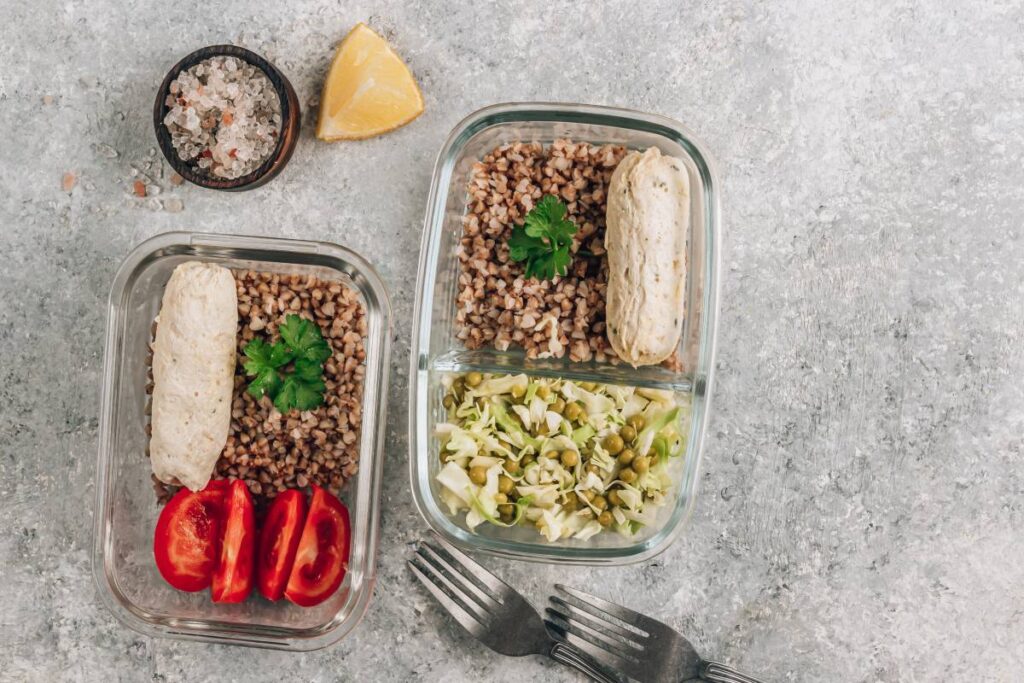
1. Tight Budget (Students, Limited Resources)
Focus on affordable, home-cooked foods that still hit your protein and calorie targets.
- Breakfast: Oats with milk + 1 boiled egg
- Lunch: Rice + lentils/beans (dal, chickpeas, kidney beans) + seasonal veggies
- Snack: Bread with peanut butter (or even plain peanuts)
- Dinner: Rice or chapati + 2 eggs + lentils or chicken (once/twice a week)
- Protein hack: Homemade yogurt + milk gives cheap protein & calories
Works best for students with low income. Still enough to gain muscle if calories are in surplus.
2. Intermediate Budget (Part-time workers, freelancers)
Add in some animal protein + supplements to improve recovery.
- Breakfast: Oats + banana + 1 scoop whey protein
- Lunch: Rice + chicken breast (150–200g) + broccoli/carrots
- Snack: Eggs + peanut butter sandwich + milk
- Dinner: Fish or beef (150g) + rice + salad
- Extras: Add whey protein shake post-workout, creatine (cheap & effective)
Balanced, affordable, and gives enough protein for steady muscle growth.
3. High Budget (Professionals, wealthy trainees)
Here you can afford premium food choices and supplements for optimal results.
- Breakfast: Oats + berries + whey isolate shake
- Lunch: Salmon or chicken breast + quinoa + avocado + veggies
- Snack: Greek yogurt + nuts + protein bar
- Dinner: Lean beef steak + sweet potatoes + green veggies
- Extras: Creatine, omega-3s, multivitamins, pre-workout if needed
Not necessary to grow, but offers variety, convenience, and micronutrient coverage.
Example Meal Plan for a 65kg Skinny Guy
- Breakfast: Oats, banana, whey protein
- Lunch: Rice, chicken, broccoli
- Snack: Peanut butter + milk
- Dinner: Fish + rice + veggies
No matter your budget, the rules never change: eat in a calorie surplus, get enough protein, and stay consistent. There’s no rocket science here, it’s about knowing your body, your needs, and being honest with yourself.
Common Mistakes Skinny Guys Make
When I first started training, I made a lot of mistakes that slowed down my progress. If you’re beginning your skinny-to-muscular transformation, learn from these so you don’t repeat them.
1. Eating Junk Calories Instead of Clean Foods
At first, I thought the solution was simple: eat more. I forced myself into a calorie surplus (2600–2700 kcal when my maintenance was around 2300–2400 kcal), but mostly with the wrong foods.I ate oily parathas, fried eggs from local shops, and heavy local dishes overloaded with oil.
Yes, I gained 5–6 kg in a couple of months, but most of it was just skinny fat around my stomach. Some friends even relied on cheap mass gainers, which were just “dirty calories in a scoop.”Once my brother joined me, we got serious. We cleaned up our diet, reduced unnecessary oils, and focused on proper nutrition. That’s when the real progress started.
2. Overtraining Upper Body and Skipping Legs
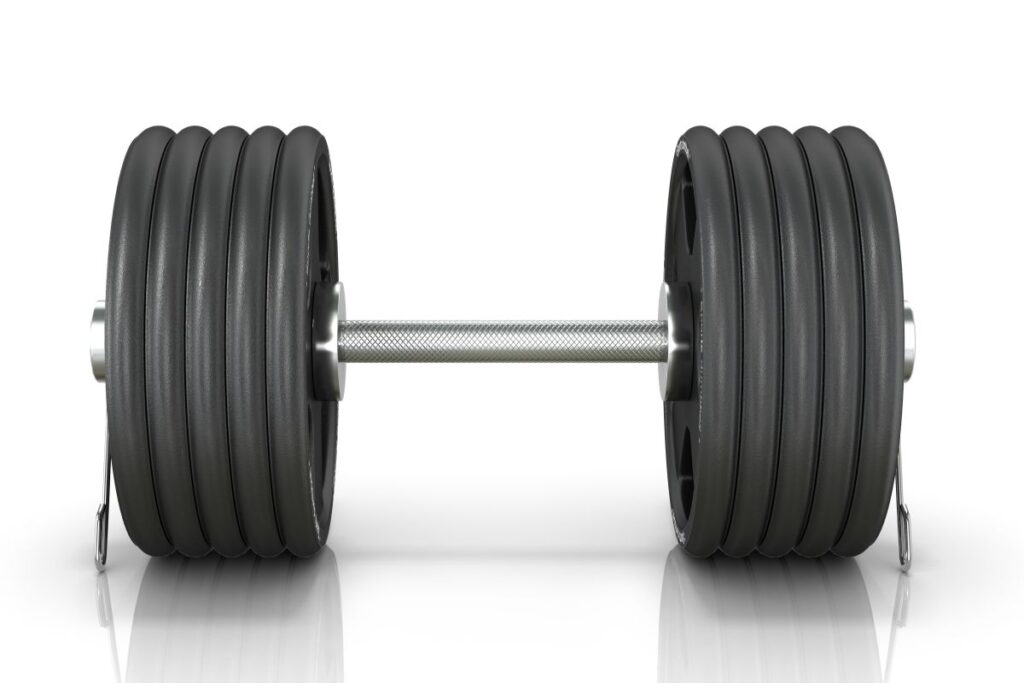
Like many skinny beginners, I trained my chest and arms almost every day while ignoring my legs. The result? A stronger-looking upper body, but weak, chicken-like legs.
If you want a balanced, muscular body, don’t make this mistake. Train legs consistently squats, deadlifts, and lunges build real strength and shape. Remember: you can’t build a lion’s chest on chicken legs.
3. Constantly Switching Workout Programs
In the beginning, I jumped from one YouTube routine to another every other week. It felt exciting, but in reality, I wasn’t giving my body enough time to adapt.
The truth is: muscle growth needs consistency. Stick to one workout program for at least 3–4 months before making changes. Then, adjust based on your body’s progress and needs.
4. Not Tracking Progress
I also avoided tracking because I felt insecure. I didn’t want pictures of my skinny body, and I never wrote down the weights I lifted. This was a big mistake.
Progress tracking is powerful:
- Photos show how far you’ve come.
- Workout logs let you know exactly how much weight you lifted last week so you can apply progressive overload.
- Small milestones motivate you to keep going.
Now, I always recommend taking post-workout pictures (even if only for yourself) and writing down every set, rep, and weight.
Other Inspiring Transformation Stories

Sometimes all we need is proof that it’s possible. Here are a couple of stories that inspired me in my own journey:
- David Laid’s transformation is one of the most famous skinny-to-muscular journeys.
- Men’s Health feature on a skinny guy building muscle showing what’s possible with consistency and diet.
For more, check out my Transformation Stories category where I’ll be sharing both my journey and other powerful examples.
FAQs:Skinny to Muscular Transformation
1. I have a high metabolism can I gain muscles fast?
Yes. Muscle growth (hypertrophy) is possible with proper training, calorie surplus, and protein. High metabolism just means you need more food to fuel growth.
2. How many days should I work out in a week?
It depends on your schedule and recovery. Start with 3–6 days per week. You can pick any of the workout plans above (3-day, 5-day, or Push–Pull–Legs) based on your lifestyle.
3. Should I buy a mass gainer?
No. Most mass gainers are just cheap calories filled with sugar and fillers. It’s better to get calories and protein from whole foods or whey protein if your budget allows.
4. Do I always need to track my calories?
Yes, especially in the beginning. Tracking teaches you your body’s needs. After 6–12 months, you’ll naturally understand your portions and calorie intake without strict tracking.
5. Should skinny beginners bulk or cut first?
You can do both at the same time. With a proper diet, structured workout plan, and enough sleep, beginners can build muscle while losing fat (called body recomposition).
6. What supplements help the most?
Focus on natural food first. If your budget allows, whey protein and creatine are proven, effective supplements for strength and recovery.
7. Can you build muscle without a gym?
Yes. Bodyweight exercises like push-ups, pull-ups, squats, and dips can build muscle if you apply progressive overload. A gym makes it easier but isn’t mandatory.
8. Can a skinny guy build muscle naturally?
Absolutely. With a clean diet, enough calories, progressive workouts, and patience, you can transform naturally. Supplements like whey are optional, not required.
My Future Fitness Goals

Right now, I sit at 65 kg with around 8% body fat. My next milestone is to reach 72–73 kg while keeping a lean, aesthetic look. I especially want to improve my back (lats), chest, biceps, and side abs definition, while also bringing more balance and shape to my legs.
I’ll admit staying consistent hasn’t always been easy. Between research work, skill learning, and managing daily responsibilities, I’ve slipped out of routine at times. But fitness isn’t something I can pause; it’s a lifelong commitment. My goal now is to make food, sleep, and workouts fit naturally into my schedule so they become habits, not tasks.
For me, the goal isn’t just bigger muscles, it’s becoming a better version of myself every day. Fitness is a journey without an end, and the real progress comes from showing up, learning, and improving step by step.
Conclusion:
Going from skinny to muscular growth isn’t about luck or fancy supplements — it’s about knowledge, consistency, and patience. I began at 51 kg with no guidance, eating the wrong foods, and overtraining. Over time, I learned the real formula: train with progressive overload, eat in a calorie surplus with enough protein, rest well, and stick to a plan.
This guide has shown both the science and my personal journey. We covered hypertrophy, nutrition, and effective workout splits like Push–Pull–Legs, plus alternatives for busier schedules. I also shared the common mistakes I made so you can avoid wasting time.
My journey continues, and you can follow the full story on my About Page where I share every stage of my transformation. At 65 kg and 8% body fat, my next goal is 72–73 kg with more definition in my back, chest, arms, and abs. But fitness isn’t just about numbers it’s about continuous self-improvement. A stronger body builds a stronger mind. If I could achieve this while balancing studies, freelance work, and limited resources, so can you. Start small, stay consistent, and keep progressing step by step. Transformation is possible and it’s worth it.

Ahmad Hassan is a fitness writer and transformation coach behind GymWithMind.com, specializing in the Skinny to Muscular Transformation niche. After going from 51 kg to 65 kg naturally, he now shares science-backed, practical strategies to help skinny guys build lean muscle through smart training, balanced nutrition, and consistency. His guides blend real experience with research to make fitness simple, achievable, and sustainable
Trending

 Skinny to Muscular1 year ago
Skinny to Muscular1 year agoDiscover Elite Body Sculpting: Best 8 Method Revealed For Precision Shaping:

 Skinny to Muscular1 year ago
Skinny to Muscular1 year agoRealistic 6 Month Body Transformation Female: From Struggle To Power

 Skinny to Muscular1 year ago
Skinny to Muscular1 year agoBody Fitness Tips For Female; Unleashing Fitness Secrets

 Skinny to Muscular2 years ago
Skinny to Muscular2 years agoHow To Lose 50 Pounds in 5 Months: Is it possible ?

 Skinny to Muscular1 year ago
Skinny to Muscular1 year ago9 Best Front Squat Alternative At Home And Gym:
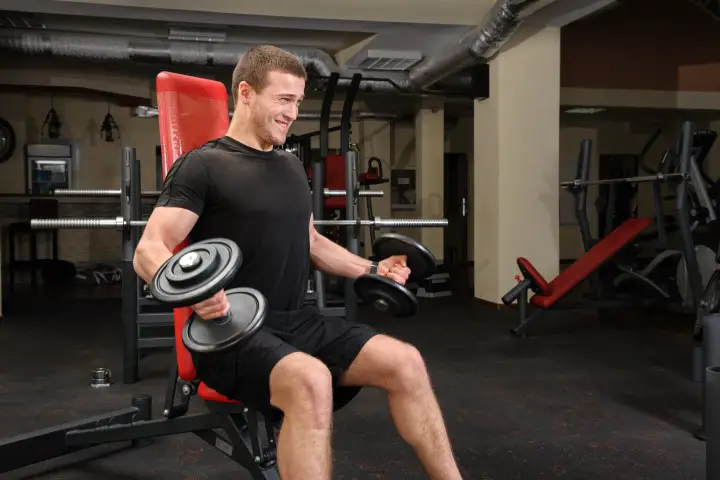
 Skinny to Muscular1 year ago
Skinny to Muscular1 year agoTop 12 Books For Strength Coaches:

 Skinny to Muscular2 years ago
Skinny to Muscular2 years agoKettlebell Golf Workout;- Get Ready For Swing

 Skinny to Muscular1 year ago
Skinny to Muscular1 year ago15 Best Strength And Conditioning Books
